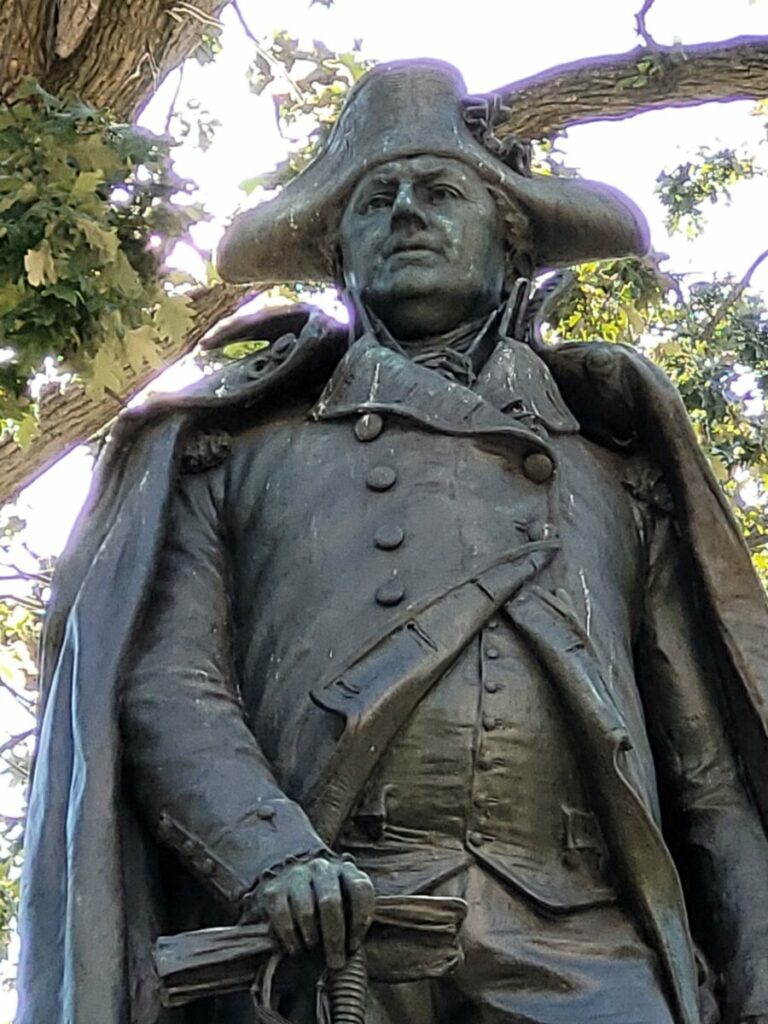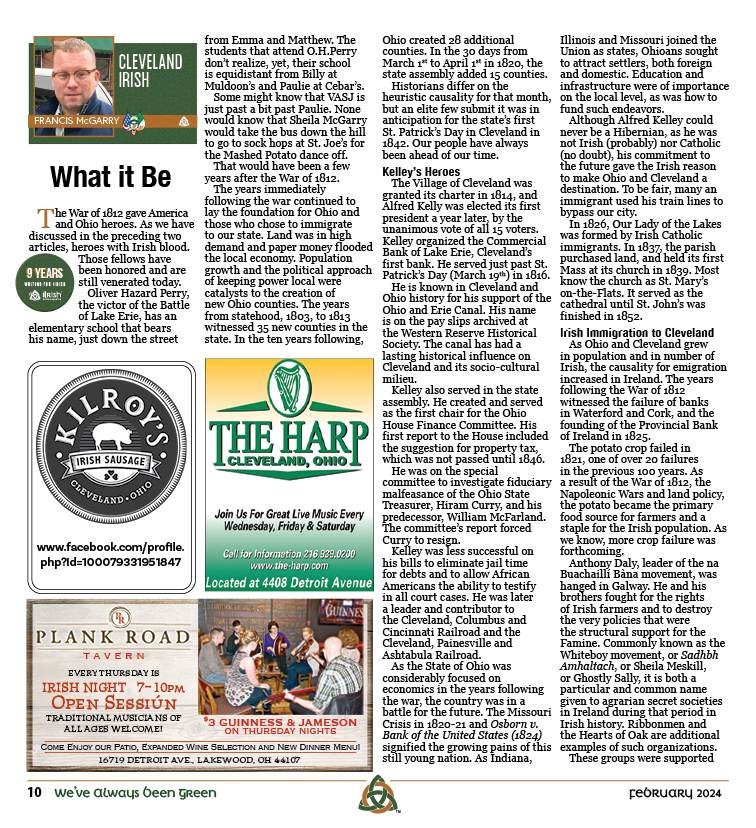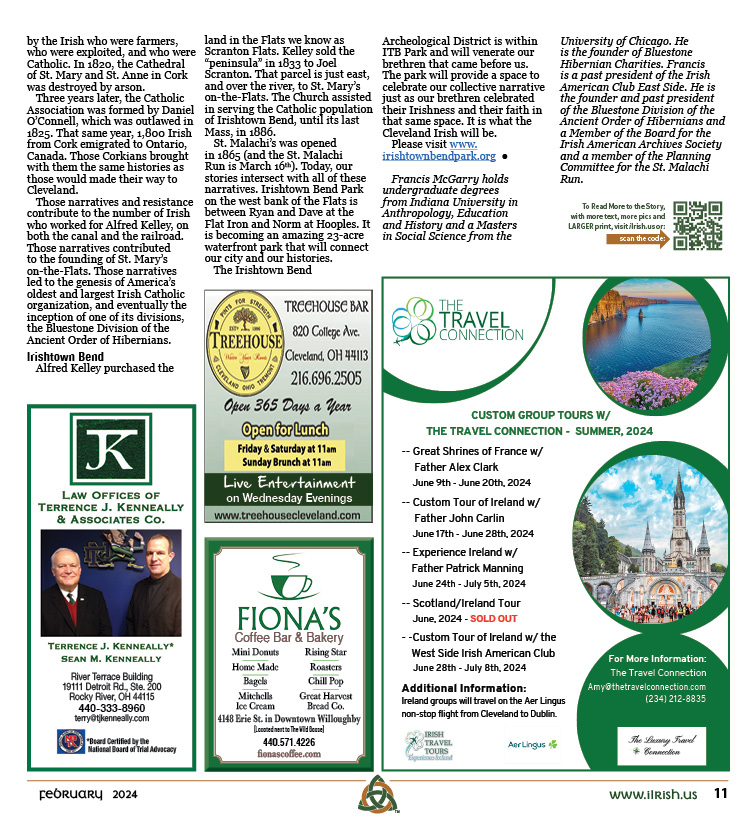
The War of 1812 gave America and Ohio heroes. As we have discussed in the preceding two articles, heroes with Irish blood. Those fellows have been honored and are still venerated today.
Oliver Hazard Perry, the victor of the Battle of Lake Erie, has an elementary school that bears his name, just down the street from Emma and Matthew. The students that attend O.H.Perry don’t realize, yet, their school is equidistant from Billy at Muldoon’s and Paulie at Cebar’s.
Some might know that VASJ is just past a bit past Paulie. None would know that Sheila McGarry would take the bus down the hill to go to sock hops at St. Joe’s for the Mashed Potato dance off.
That would have been a few years after the War of 1812.
The years immediately following the war continued to lay the foundation for Ohio and those who chose to immigrate to our state. Land was in high demand and paper money flooded the local economy.
Population growth and the political approach of keeping power local were catalysts to the creation of new Ohio counties. The years from statehood, 1803, to 1813 witnessed 35 new counties in the state. In the ten years following, Ohio created 28 additional counties. In the 30 days from March 1st to April 1st in 1820, the state assembly added 15 counties.
Historians differ on the heuristic causality for that month, but an elite few submit it was in anticipation for the state’s first St. Patrick’s Day in Cleveland in 1842. Our people have always been ahead of our time.
Kelley’s Heroes
The Village of Cleveland was granted its charter in 1814, and Alfred Kelly was elected its first president a year later, by the unanimous vote of all 15 voters. Kelley organized the Commercial Bank of Lake Erie, Cleveland’s first bank. He served just past St. Patrick’s Day (March 19th) in 1816.
He is known in Cleveland and Ohio history for his support of the Ohio and Erie Canal. His name is on the pay slips archived at the Western Reserve Historical Society. The canal has had a lasting historical influence on Cleveland and its socio-cultural milieu.
Kelley also served in the state assembly. He created and served as the first chair for the Ohio House Finance Committee. His first report to the House included the suggestion for property tax, which was not passed until 1846.
He was on the special committee to investigate fiduciary malfeasance of the Ohio State Treasurer, Hiram Curry, and his predecessor, William McFarland. The committee’s report forced Curry to resign.
Kelley was less successful on his bills to eliminate jail time for debts and to allow African Americans the ability to testify in all court cases. He was later a leader and contributor to the Cleveland, Columbus and Cincinnati Railroad and the Cleveland, Painesville and Ashtabula Railroad.
As the State of Ohio was considerably focused on economics in the years following the war, the country was in a battle for the future. The Missouri Crisis in 1820-21 and Osborn v. Bank of the United States (1824) signified the growing pains of this still young nation.
As Indiana, Illinois and Missouri joined the Union as states, Ohioans sought to attract settlers, both foreign and domestic. Education and infrastructure were of importance on the local level, as was how to fund such endeavors.
Although Alfred Kelley could never be a Hibernian, as he was not Irish (probably) nor Catholic (no doubt), his commitment to the future gave the Irish reason to make Ohio and Cleveland a destination. To be fair, many an immigrant used his train lines to bypass our city.
In 1826, Our Lady of the Lakes was formed by Irish Catholic immigrants. In 1837, the parish purchased land, and held its first Mass at its church in 1839. Most know the church as St. Mary’s on-the-Flats. It served as the cathedral until St. John’s was finished in 1852.
Irish Immigration to Cleveland
As Ohio and Cleveland grew in population and in number of Irish, the causality for emigration increased in Ireland. The years following the War of 1812 witnessed the failure of banks in Waterford and Cork, and the founding of the Provincial Bank of Ireland in 1825.
The potato crop failed in 1821, one of over 20 failures in the previous 100 years. As a result of the War of 1812, the Napoleonic Wars and land policy, the potato became the primary food source for farmers and a staple for the Irish population. As we know, more crop failure was forthcoming.
Anthony Daly, leader of the na Buachaillí Bàna movement, was hanged in Galway. He and his brothers fought for the rights of Irish farmers and to destroy the very policies that were the structural support for the Famine. Commonly known as the Whiteboy movement, or Sadhbh Amhaltach, or Sheila Meskill, or Ghostly Sally, it is both a particular and common name given to agrarian secret societies in Ireland during that period in Irish history. Ribbonmen and the Hearts of Oak are additional examples of such organizations.
These groups were supported by the Irish who were farmers, who were exploited, and who were Catholic. In 1820, the Cathedral of St. Mary and St. Anne in Cork was destroyed by arson.
Three years later, the Catholic Association was formed by Daniel O’Connell, which was outlawed in 1825. That same year, 1,800 Irish from Cork emigrated to Ontario, Canada. Those Corkians brought with them the same histories as those would made their way to Cleveland.
Those narratives and resistance contribute to the number of Irish who worked for Alfred Kelley, on both the canal and the railroad. Those narratives contributed to the founding of St. Mary’s on-the-Flats. Those narratives led to the genesis of America’s oldest and largest Irish Catholic organization, and eventually the inception of one of its divisions, the Bluestone Division of the Ancient Order of Hibernians.
Irishtown Bend
Alfred Kelley purchased the land in the Flats we know as Scranton Flats. Kelley sold the “peninsula” in 1833 to Joel Scranton. That parcel is just east, and over the river, to St. Mary’s on-the-Flats. The Church assisted in serving the Catholic population of Irishtown Bend, until its last Mass, in 1886.
St. Malachi’s was opened in 1865 (and the St. Malachi Run is March 16th). Today, our stories intersect with all of these narratives. Irishtown Bend Park on the west bank of the Flats is between Ryan and Dave at the Flat Iron and Norm at Hooples. It is becoming an amazing 23-acre waterfront park that will connect our city and our histories.
The Irishtown Bend Archeological District is within ITB Park and will venerate our brethren that came before us. The park will provide a space to celebrate our collective narrative just as our brethren celebrated their Irishness and their faith in that same space. It is what the Cleveland Irish will be.
Please visit www.irishtownbendpark.org
Find this and Francis’s other Cleveland Irish columns and others from this month’s issue HERE!





*Francis McGarry holds undergraduate degrees from Indiana University in Anthropology, Education and History and a Masters in Social Science from the University of Chicago. He is the Executive Director of Bluestone Hibernian Charities and proprietor of McGarry Consulting. He is a past president of the Irish American Club East Side and the founder and past president of the Bluestone Division of the Ancient Order of Hibernians.


ends

Monthly newsmagazine serving people of Irish descent from Cleveland to Clearwater. We cover the movers, shakers & music makers each and every month.
Since our 2006 inception, iIrish has donated more than $376,000 to local and national charities.
GET UPDATES ON THE SERIOUS & THE SHENANIGANS!